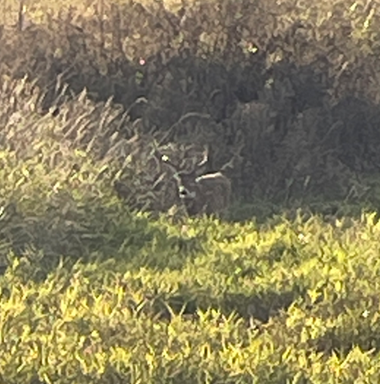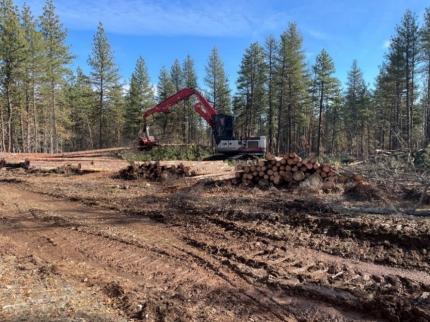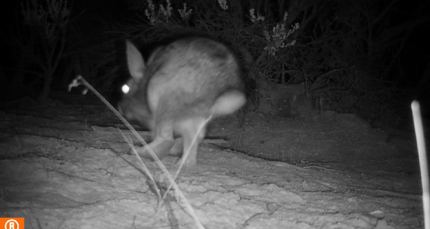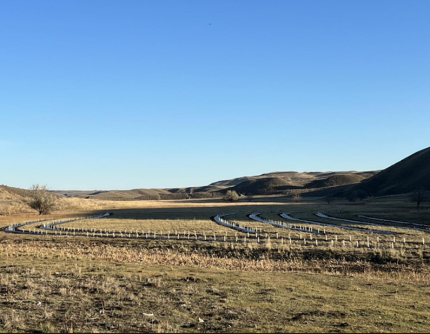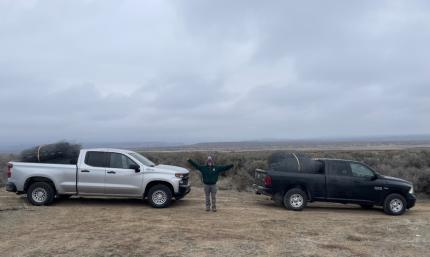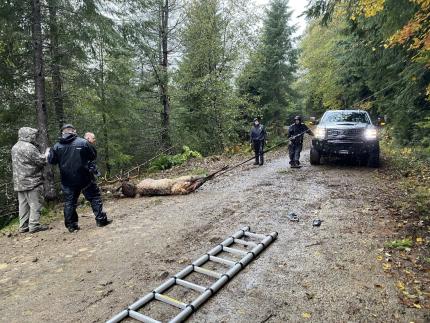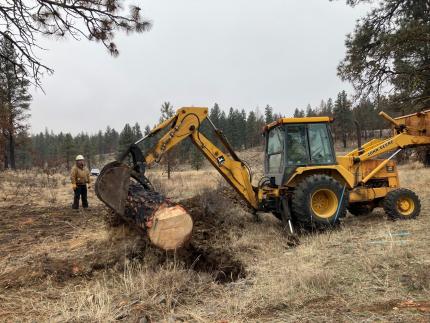Biweekly report Nov16-30 2024 - Region 3 (South Central)
Managing Wildlife Populations
Oak Creek Wildlife Area Elk Fence Repairs: Oak Creek Wildlife Area Natural Resource Worker Floyd continues to replace and repair elk fencing along the Hwy 12 corridor that was impacted by the Retreat Fire.
Oak Creek Wildlife Area Elk Fence Check: Oak Creek Wildlife Area Assistant Manager Charlet continues to check for and fix problems with existing elk fence. Elk fence checks will continue through the next week in preparation of the coming winter season.
Wenas Wildlife Area – Elk Fence Check: Wenas Wildlife Area staff members completed scouting the elk fence around the Wenas Wildlife Area and fixing any issues found.
Providing Recreation Opportunities
Wenas Wildlife Area – Tree Removal in the MRT: Wenas Wildlife Area Biologist Miller cut out a tree that was down over a trail in the Manashtash Ridge Trail system. The tree was around 40 inches wide at the base and was suspended over the trail.
Region 3 Pheasant Releases: Natural Resource Technician Pizzini and Region 3 Private Lands Biologist Manderbach completed another pheasant release as part of the Eastern Washington Pheasant Enhancement Program. Big Flat HMU, Lost Island HMU, and the Hope Valley Wildlife Area all received roosters.
Conserving Natural Landscapes
L.T. Murray Restoration: The 2024 planting season in the Whiskey Dick unit was wrapped up with the help of over 20 volunteer members over the course of three weekends. Participants from the Ruffed Grouse Society, local Field and Stream Chapter, Master Hunters, Backcountry Hunters and Anglers, Central Washington University’s Geology and Biology Departments, and the Ellensburg High School helped plant over 3,200 native shrubs in the wake of the 2022 Vantage Hwy fire.
Sunnyside/Snake River Mesa Lake Wetland Project: The construction phase of the Mesa Lake Pac-Man wetland development project with Ducks Unlimited is underway. Crews expect to complete the project within the next few weeks. Sunnyside/Snake River Wildlife Area Manager Kaelber and Assistant Manager Jahns have met with the construction crews and Ducks Unlimited engineer several times to finalize the construction plans. Wildlife area staff members are looking forward to the end result and providing more wetland habitat for migratory waterfowl!
Construction crews beginning work on the Mesa Lake Pacman Wetland Project.
Wenas Wildlife Area – Black Canyon Seeding: Wenas Wildlife Area staff members began seeding the dozer lines put in to control the Black Canyon Fire. There are over 18 miles of dozer lines in the wildlife area, with over half being seeded with native species this week. The hope is that this will speed the return to a natural landscape and help with erosion control.
Seed Collection: Natural Resource Technician Pizzini and Region 3 Private Lands Biologist Manderbach have continued to work on collecting native seeds for future restoration. Sagebrush, rabbitbrush, and juniper are all in seed currently. These seeds will mostly be used to increase wildlife habitat on private lands with public access contracts.
Region 3 Native Shrubs for Private Lands: Region 3 Private Lands Biologist Manderbach picked up a native shrub order of around 1,100 shrubs. These shrubs will all be planted on private lands in the public access program, increasing native shrub cover in otherwise CRP grass and dryland wheat fields. Late muzzleloader deer and late archery deer seasons continue in the GMU’s of these properties, but many of these plants will be put in the ground soon after.
Providing Education and Outreach
Benton Franklin Pheasants Forever: Private Lands Biologist Manderbach attended the November meeting for the new Benton Franklin chapter of Pheasants Forever. This was just the third meeting of the newly revived chapter and one of the members reached out to get some Washington Department of Fish and Wildlife (WDFW) attendance. Manderbach introduced himself to the group and got a general idea of how this local Pheasants Forever chapter can work together with WDFW. A few different collaboration ideas and volunteer events were discussed for future planning.









































